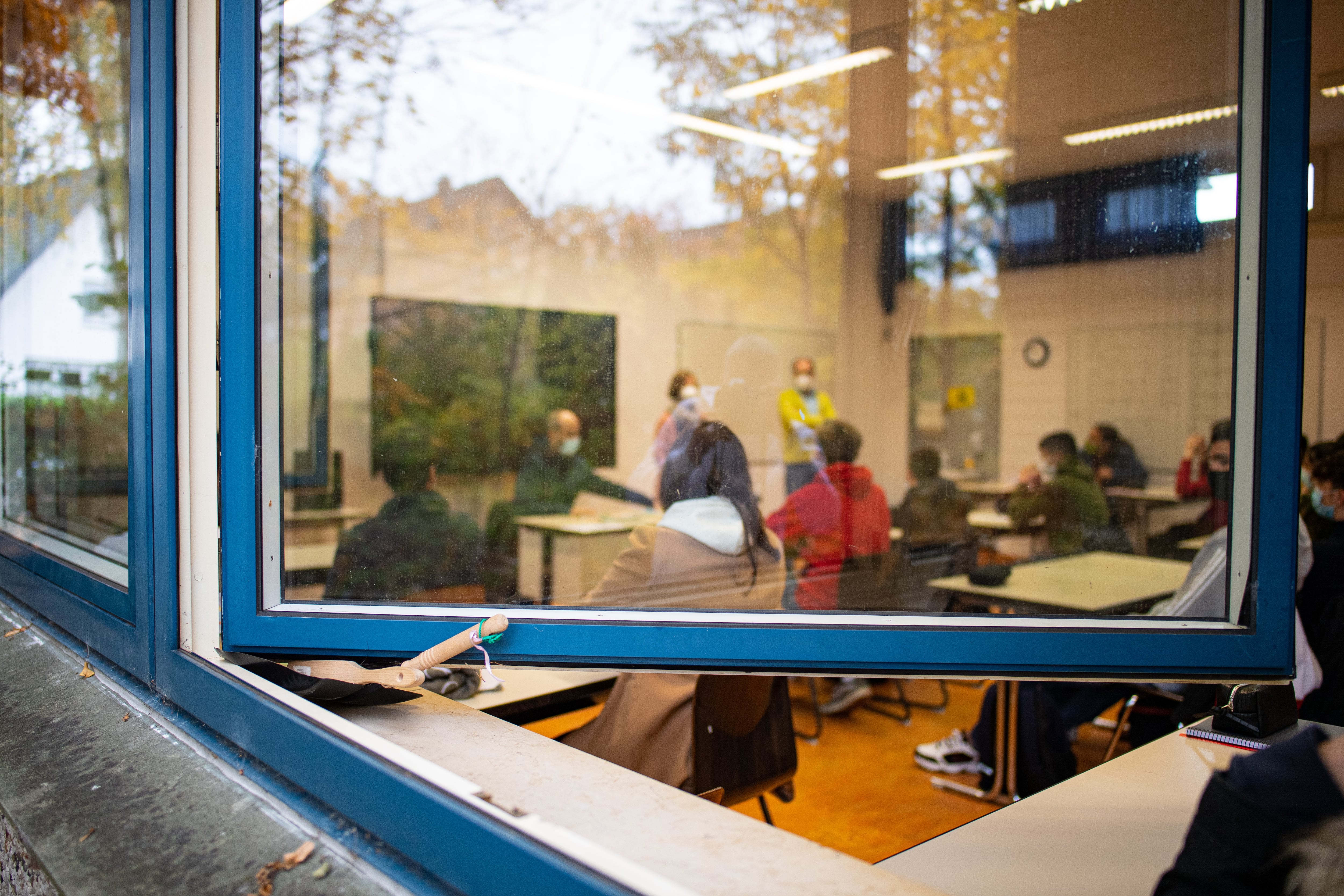After making $68 million in ventilation-related repairs this year, Chicago officials say ventilation and air quality checks have cleared almost all district classrooms for the return of students — 91% because they have functioning ventilation systems and another 8% thanks to windows that open.
The district also is spending $8.5 million to outfit each of its classrooms with air purifiers as part of its push to begin gradually reopening school buildings.
However, district officials would not specify how these findings and the purchase of 20,000 air purifiers will affect the reopening timeline. They said the district is still on track to offer in-person instruction to pre-kindergarteners and some special education students at some point during the school year’s second quarter, which begins virtually for all students next week. Chief Operating Officer Arnie Rivera said they will have a more specific update “in the near future.”
Officials again vowed that no student will return to a classroom without an air purifier and proper ventilation in district buildings, which have an average age of 80 years.
“We have made critical investments to safely support the return of students to in-person instruction,” said Rivera.
The Chicago Teachers Union, which strongly opposes reopening buildings to students amid a sharp spike in COVID-19 cases citywide, had demanded an opportunity to bring in experts to conduct its own air quality assessments. In a message sent to members Wednesday, the union president Jesse Sharkey criticized the district’s refusal and called its announcement “a red herring,” meant to distract from rising coronavirus rates and an ongoing legal standoff over a district requirement that clerks report to work in school buildings.
He wrote the district is not bringing educators and students back to classrooms next week because “CPS and the mayor know that buildings aren’t ready to be reopened, despite their claims in the press.”
The district provided system-wide analysis but did not share individual school reports by press time. These reports will be posted at cps.edu/airquality.
The ventilation question has loomed large in the debate over when it’s safe to reopen schools nationwide. In New York, inspectors deemed most classrooms safe to reopen but said the majority of bathrooms needed upgrades to be safe. In Philadelphia, reports showed that two-thirds of elementary classrooms lacked the minimum industry-recommended ventilation standards to safely hold 15 or more people, and some school reports were missing.
In Chicago, the ventilation issue is certainly not the sole remaining hurdle to reopening: Last week, the district surveyed pre-kindergarten and special education parents about their interest in sending their children back and teachers about their intent to return to in-person work; officials have not announced the outcome of these surveys yet.
Based on documents the union said it obtained in court, union officials said at least half of the Chicago district buildings had serious ventilation issues, but it’s not clear whether that was before or after the district’s more recent investments in repairs.
The district outsourced separate air quality assessments to independent state-licensed industrial hygienists. These outside assessments of all but six of its roughly 520 campuses found them “acceptable for re-occupancy.” The remaining six schools, where construction projects recently wrapped up, will be evaluated soon.
The district said not all classrooms have central air systems; some have “classroom-based systems” such as unit ventilators and rooftop units. The district said the air purifiers, which filter 99.99% of airborne pathogens, will be added to all classrooms and some other school spaces “out of an abundance of caution and in response to feedback from staff and parents.”
“By having a purifier, you eliminate the need for having a window open during inclement weather,” Rivera said.
David Krause, a toxicologist, industrial hygienist, and a member of the American Industrial Hygiene Association, said school ventilation systems were simply not designed and set up to prevent infection because they don’t have the capacity to replace a room’s air often enough to effectively reduce the risk of virus transmission. He said the air purifiers the district is buying should address that issue, as long as the model or models have the capacity to move enough air fast enough.
“This approach has been used in healthcare for decades,” he said. “They are on the right track.”
Krause says he believes such measures to address air quality are more effective than the use of personal protective equipment and efforts to sanitize spaces, which all depend on people taking them seriously and doing them consistently: “People are our own worst enemy in this matter.”
District officials continue to address the issues the ventilation assessments found. They did not offer a timeline on finishing up any remaining repairs or say when schools will receive the air purifiers.
In a press call with district officials, Dr. Jennifer Seo, a medical director at the Chicago Department of Public Health, praised the precautions. She stressed again that the department’s close tracking of cases and transmission at child care centers and private schools that have reopened — data that has not been shared publicly — has shown that with proper safety measures, outbreaks in these settings are rare. That has remained the case even as coronavirus infections across the city have risen sharply.
“Schools have been able to continue to provide a safe environment for students,” she said.







